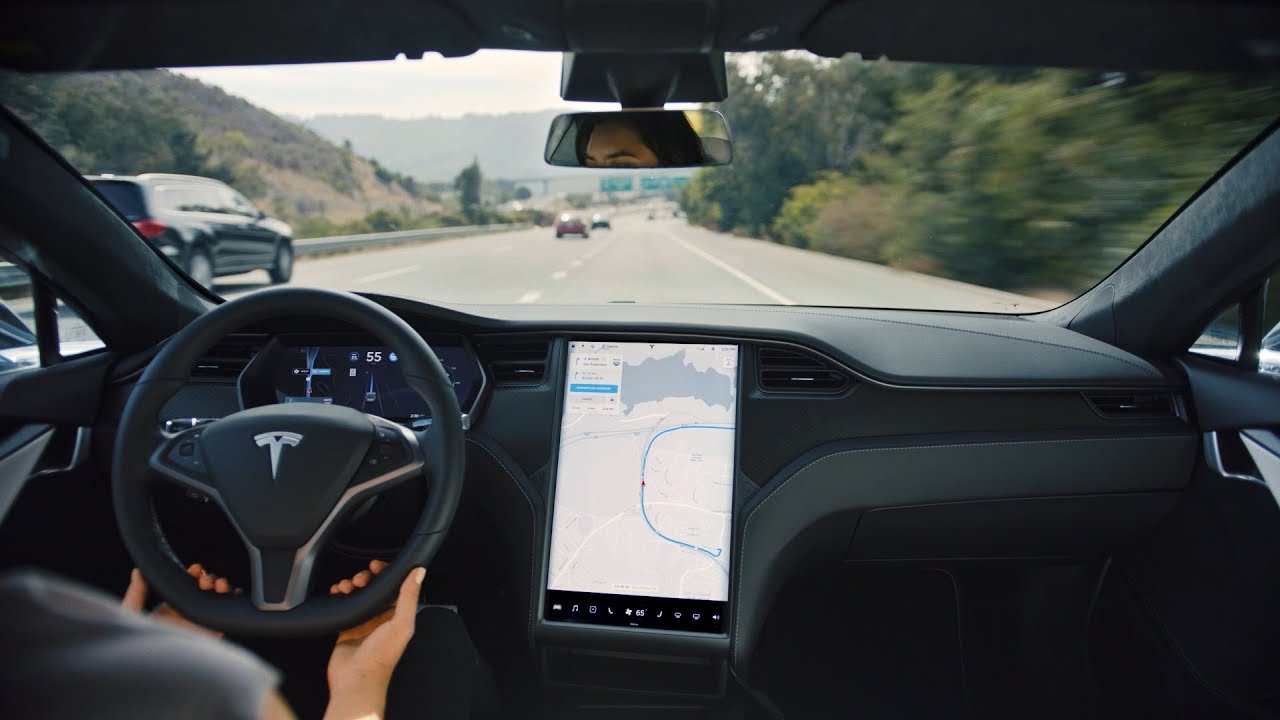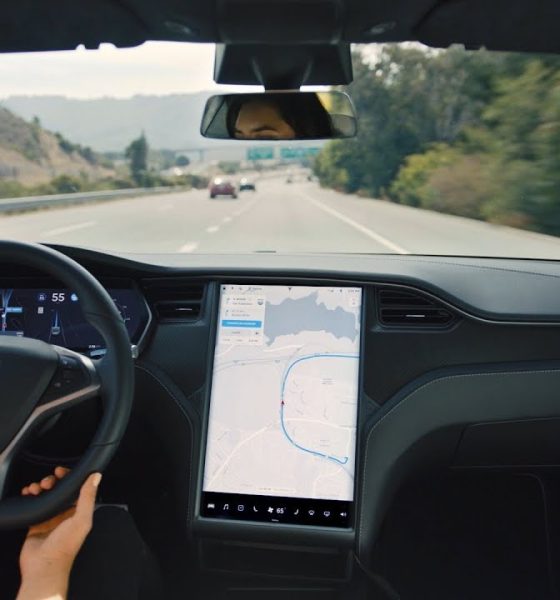Tesla has started sending out Autopilot Camera Upgrade invites to Model S and Model X owners who purchased Full Self-Driving when it was initially launched years ago. As per the communication, Tesla is now poised to start camera retrofits for its older cars, which would allow Model S and Model X vehicles with FSD to access the full suite of features currently offered by the company.
A screenshot of the communication has been shared online, and it reads as follows: “As an owner with Full Self-Driving Capability and early production cameras, you are eligible for complimentary Autopilot Camera Upgrade. Camera replacements are required to access a continuously expanding suite of Full Self-Driving Capability features. To arrange your complimentary camera replacements, schedule a new appointment from the Service menu in your Tesla App,” the message read.
Together with the launch of the new initiative, Tesla also updated its official webpage for its Full Self-Driving Computer Installations. A new section titled “Camera Replacements” has now been added to the page. The section outlines which customers are eligible for the retrofit, when the service will be available, which camera units will be replaced, how long the hardware update would take, and how early FSD adopters could schedule an appointment for the Autopilot Camera Upgrade.
It should be noted that the ongoing program is only open for vehicles that were purchased with Full Self-Driving Capability prior to September 2017. Tesla notes that only the early production cameras will be replaced with cameras with a different type of color sensor. This retrofit is only open to older Model S and Model X vehicles as well. Early Model 3s are not included in the initiative.
Autopilot Camera Upgrade retrofits are scheduled to start in November 2021, when Tesla starts sending out invites to owners of older Model S and Model X. Those who are invited would receive a message through their Tesla App informing them that a retrofit for their vehicle is available. That being said, Tesla has noted that with the company working through supply constraints, invitations for camera upgrades would be sent first to vehicles with the highest safety scores and Intel Atom-powered MCU2 units. Tesla FSD vehicles with NVIDIA Tegra-3-powered MCU1 units are poised to follow at a later date.
Cameras that would be physically replaced with the complimentary Autopilot Camera Upgrade include the forward-facing cameras, rearward-looking side cameras, and forward-looking side cameras. The entire process should take about an hour, and mobile service personnel should be able to conduct the retrofit without any issues.
There is no doubt that Tesla’s Autopilot Camera Upgrade program is noteworthy, and it does back up what Elon Musk recently promised on Twitter. Based on what Tesla has stated in its official webpage for the service, however, owners of Model S and Model X vehicles that are still equipped with MCU1 units, and who have been unable to access the Safety Score system so far despite having purchased FSD in the past, would likely be waiting some more to receive the advanced driver-assist system’s latest features.
Check out Tesla’s full update on its Autopilot Camera Upgrade program here.
Don’t hesitate to contact us with news tips. Just send a message to tips@teslarati.com to give us a heads up.

News
Tesla FSD fleet is nearing 7 billion total miles, including 2.5 billion city miles
As can be seen on Tesla’s official FSD webpage, vehicles equipped with the system have now navigated over 6.99 billion miles.

Tesla’s Full Self-Driving (Supervised) fleet is closing in on almost 7 billion total miles driven, as per data posted by the company on its official FSD webpage.
These figures hint at the massive scale of data fueling Tesla’s rapid FSD improvements, which have been quite notable as of late.
FSD mileage milestones
As can be seen on Tesla’s official FSD webpage, vehicles equipped with the system have now navigated over 6.99 billion miles. Tesla owner and avid FSD tester Whole Mars Catalog also shared a screenshot indicating that from the nearly 7 billion miles traveled by the FSD fleet, more than 2.5 billion miles were driven inside cities.
City miles are particularly valuable for complex urban scenarios like unprotected turns, pedestrian interactions, and traffic lights. This is also the difference-maker for FSD, as only complex solutions, such as Waymo’s self-driving taxis, operate similarly on inner-city streets. And even then, incidents such as the San Francisco blackouts have proven challenging for sensor-rich vehicles like Waymos.
Tesla’s data edge
Tesla has a number of advantages in the autonomous vehicle sector, one of which is the size of its fleet and the number of vehicles training FSD on real-world roads. Tesla’s nearly 7 billion FSD miles then allow the company to roll out updates that make its vehicles behave like they are being driven by experienced drivers, even if they are operating on their own.
So notable are Tesla’s improvements to FSD that NVIDIA Director of Robotics Jim Fan, after experiencing FSD v14, noted that the system is the first AI that passes what he described as a “Physical Turing Test.”
“Despite knowing exactly how robot learning works, I still find it magical watching the steering wheel turn by itself. First it feels surreal, next it becomes routine. Then, like the smartphone, taking it away actively hurts. This is how humanity gets rewired and glued to god-like technologies,” Fan wrote in a post on X.
News
Tesla starts showing how FSD will change lives in Europe
Local officials tested the system on narrow country roads and were impressed by FSD’s smooth, human-like driving, with some calling the service a game-changer for everyday life in areas that are far from urban centers.

Tesla has launched Europe’s first public shuttle service using Full Self-Driving (Supervised) in the rural Eifelkreis Bitburg-Prüm region of Germany, demonstrating how the technology can restore independence and mobility for people who struggle with limited transport options.
Local officials tested the system on narrow country roads and were impressed by FSD’s smooth, human-like driving, with some calling the service a game-changer for everyday life in areas that are far from urban centers.
Officials see real impact on rural residents
Arzfeld Mayor Johannes Kuhl and District Administrator Andreas Kruppert personally tested the Tesla shuttle service. This allowed them to see just how well FSD navigated winding lanes and rural roads confidently. Kruppert said, “Autonomous driving sounds like science fiction to many, but we simply see here that it works totally well in rural regions too.” Kuhl, for his part, also noted that FSD “feels like a very experienced driver.”
The pilot complements the area’s “Citizen Bus” program, which provides on-demand rides for elderly residents who can no longer drive themselves. Tesla Europe shared a video of a demonstration of the service, highlighting how FSD gives people their freedom back, even in places where public transport is not as prevalent.
What the Ministry for Economic Affairs and Transport says
Rhineland-Palatinate’s Minister Daniela Schmitt supported the project, praising the collaboration that made this “first of its kind in Europe” possible. As per the ministry, the rural rollout for the service shows FSD’s potential beyond major cities, and it delivers tangible benefits like grocery runs, doctor visits, and social connections for isolated residents.
“Reliable and flexible mobility is especially vital in rural areas. With the launch of a shuttle service using self-driving vehicles (FSD supervised) by Tesla in the Eifelkreis Bitburg-Prüm, an innovative pilot project is now getting underway that complements local community bus services. It is the first project of its kind in Europe.
“The result is a real gain for rural mobility: greater accessibility, more flexibility and tangible benefits for everyday life. A strong signal for innovation, cooperation and future-oriented mobility beyond urban centers,” the ministry wrote in a LinkedIn post.
News
Tesla China quietly posts Robotaxi-related job listing
Tesla China is currently seeking a Low Voltage Electrical Engineer to work on circuit board design for the company’s autonomous vehicles.

Tesla has posted a new job listing in Shanghai explicitly tied to its Robotaxi program, fueling speculation that the company is preparing to launch its dedicated autonomous ride-hailing service in China.
As noted in the listing, Tesla China is currently seeking a Low Voltage Electrical Engineer to work on circuit board design for the company’s autonomous vehicles.
Robotaxi-specific role
The listing, which was shared on social media platform X by industry watcher @tslaming, suggested that Tesla China is looking to fill the role urgently. The job listing itself specifically mentions that the person hired for the role will be working on the Low Voltage Hardware team, which would design the circuit boards that would serve as the nervous system of the Robotaxi.
Key tasks for the role, as indicated in the job listing, include collaboration with PCB layout, firmware, mechanical, program management, and validation teams, among other responsibilities. The role is based in Shanghai.
China Robotaxi launch
China represents a massive potential market for robotaxis, with its dense urban centers and supportive policies in select cities. Tesla has limited permission to roll out FSD in the country, though despite this, its vehicles have been hailed as among the best in the market when it comes to autonomous features. So far, at least, it appears that China supports Tesla’s FSD and Robotaxi rollout.
This was hinted at in November, when Tesla brought the Cybercab to the 8th China International Import Expo (CIIE) in Shanghai, marking the first time that the autonomous two-seater was brought to the Asia-Pacific region. The vehicle, despite not having a release date in China, received a significant amount of interest among the event’s attendees.










